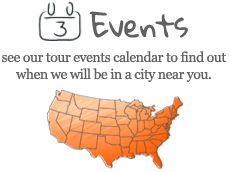Racing Season: How to Integrate Barefoot Running

World champion and record holder of the marathon (2:03:59) Haile Gebreselassie grew up running barefoot to and from school 6 miles each way.
Want to run like the Kenyans and Ethiopians? Want to fly along effortlessly, mile after mile like the legendary Tarahumara? Then integrate some barefoot running into your training.
Every spring marks the beginning of endless fun runs and races. Whether you’re an experienced barefoot yogi or a newbie to the shodless stride, the rules change when you go barefoot. Listen to your gut and be cognizant of training and transition time. While you may be ready for 10K jogging in three months, wait another 3 months before you plan on running with speed. If you catch yourself doubting whether or not you can do it, you likely aren’t ready. Even the most well-intentioned runners can push past their limits and cook their feet. It’s easy to overdo it, particularly in the beginning or with racing.
How to integrate barefoot running into your training:
Always do barefoot time before additional running time in a shoe
- This helps you practice good form before you fatigue
- Barefoot running first allows you to run on dry feet, so you don’t scuff off everything you’ve worked hard to gain.
Remember the 3 times rule
- Initially one barefoot mile = three miles in a shoe.
- If you’re going for a six mile run and do the first mile barefoot, you’ve done the equivalent of 3 miles, so go another three in your shoes and call it a day.
- Do the rest of your shod running with your old form and let your new muscles rest.
Always use this equation in accordance with your training plan. Why? In the beginning, barefoot training tires out your body (by working muscles in new ways and recruiting many more muscle groups) a lot quicker than shod training. Note: if you’re a brand new beginner, don’t run more than 200 yards barefoot your first time and build with a maximum of 100 additional yards every-other day. By integrating barefoot practices into your training you can build long-term endurance, strong feet and lessen your chance of injury. Remember: if your feet aren’t ready to go the full distance barefoot, put on your shoes. In fact, for your first year of racing barefoot, always carry your shoes; that way you have them if you need them. There is no need to start off the racing season with an injury! In the long haul, slow and steady wins the race.
- Log in to post comments



